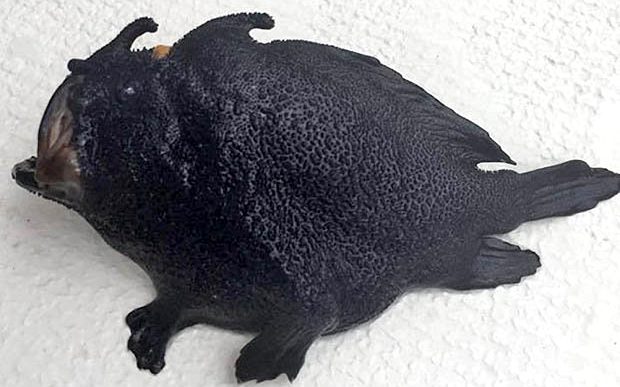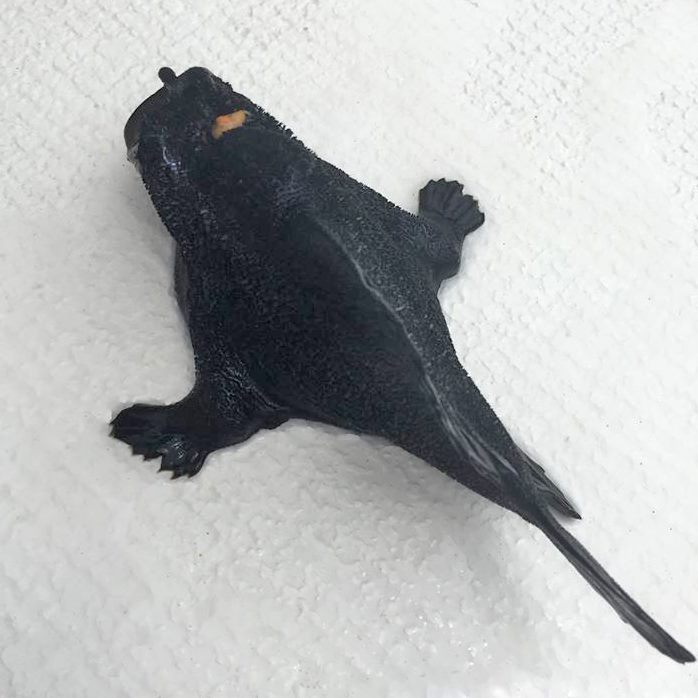Go, swim: near New Zealand found a fish with legs

Oceanologists from New Zealand reported an unusual finding in the Bay of Islands in the northeastern part of the island. People resting on the beach noticed a strange fish at low tide. She had a dark color, and her lower fins strongly resembled limbs intended for walking. Intrigued tourists sent fish to the Museum of New Zealand for identification by specialists.
Museum specialists shared this information on their Facebook page , and have already determined that the fish belongs to the family of striped clown fish[Antennarius striatus] (or as they are called in English literature, "frogfish", that is, "frog fish"). Clown fish got their name because of the incredibly bright colors and strange appearance. This instance is unique in its dark monophonic coloring - it is not yet clear whether it is a deviation or whether it is a previously unknown new species.
The body of clown fish is covered in various shapes by processes that resemble leaves, lichens, and sometimes wool. These are predatory fish; they feed on other fish and invertebrates. Usually they wait for the victim, hiding at the entrance to some underground cave. One of the processes coming from the spine has the shape of a worm and is used by them as a bait.

Another interesting fact from the life of clown fish: their jaws work faster than the jaws of any other vertebrate animal, they close up almost at the speed of a rifle bullet. But the most amazing thing is that these fish can use their lower paired fins to move along the bottom. Based on fins from the bottom, they seem to be walking slowly.
Last year, one diver shot a video with a rather “hairy” representative of clown fish, on which the bait process is clearly visible:
Clown fish are not the only representatives of marine fauna that have the likeness of legs. Mudskippers , fish from the goby family, strongly resemble amphibians due to the presence of thickened lower fins resembling arms. They use fins to move along the bottom that has been exposed at low tide, and prey on small prey left by low tide. They use the tail both for jumping on land and for fast movement in shallow water.
